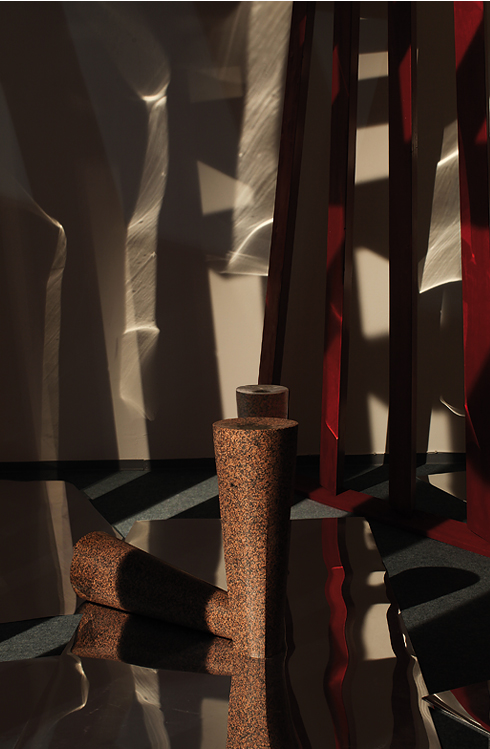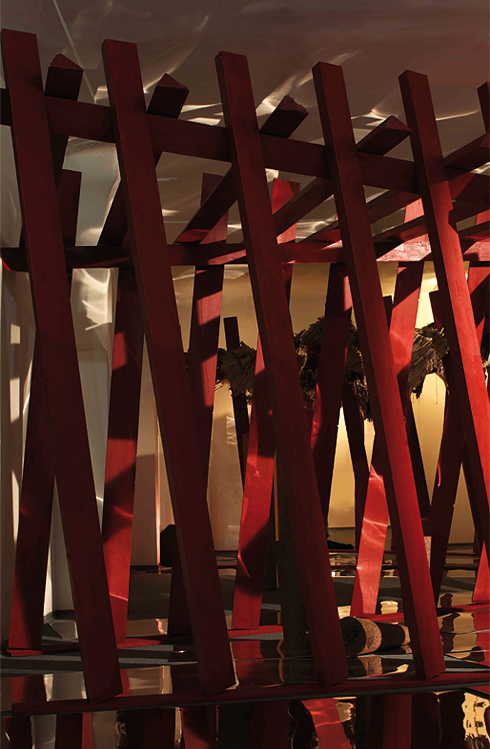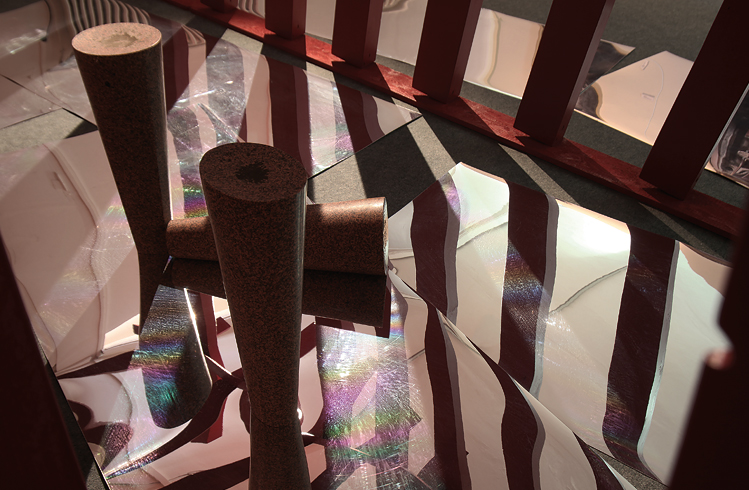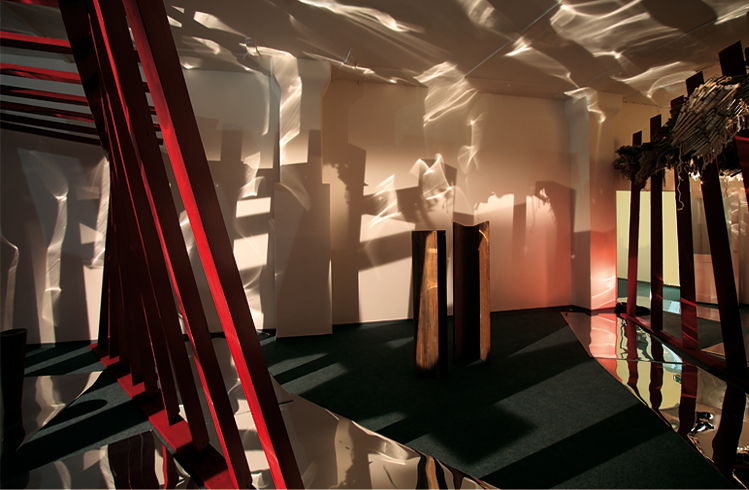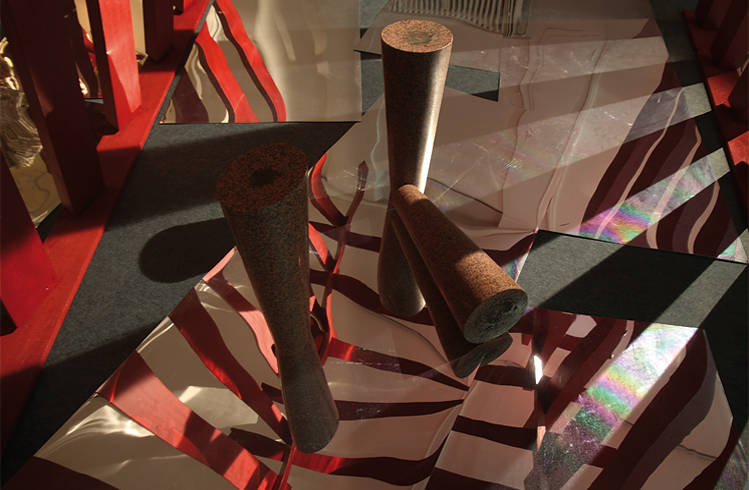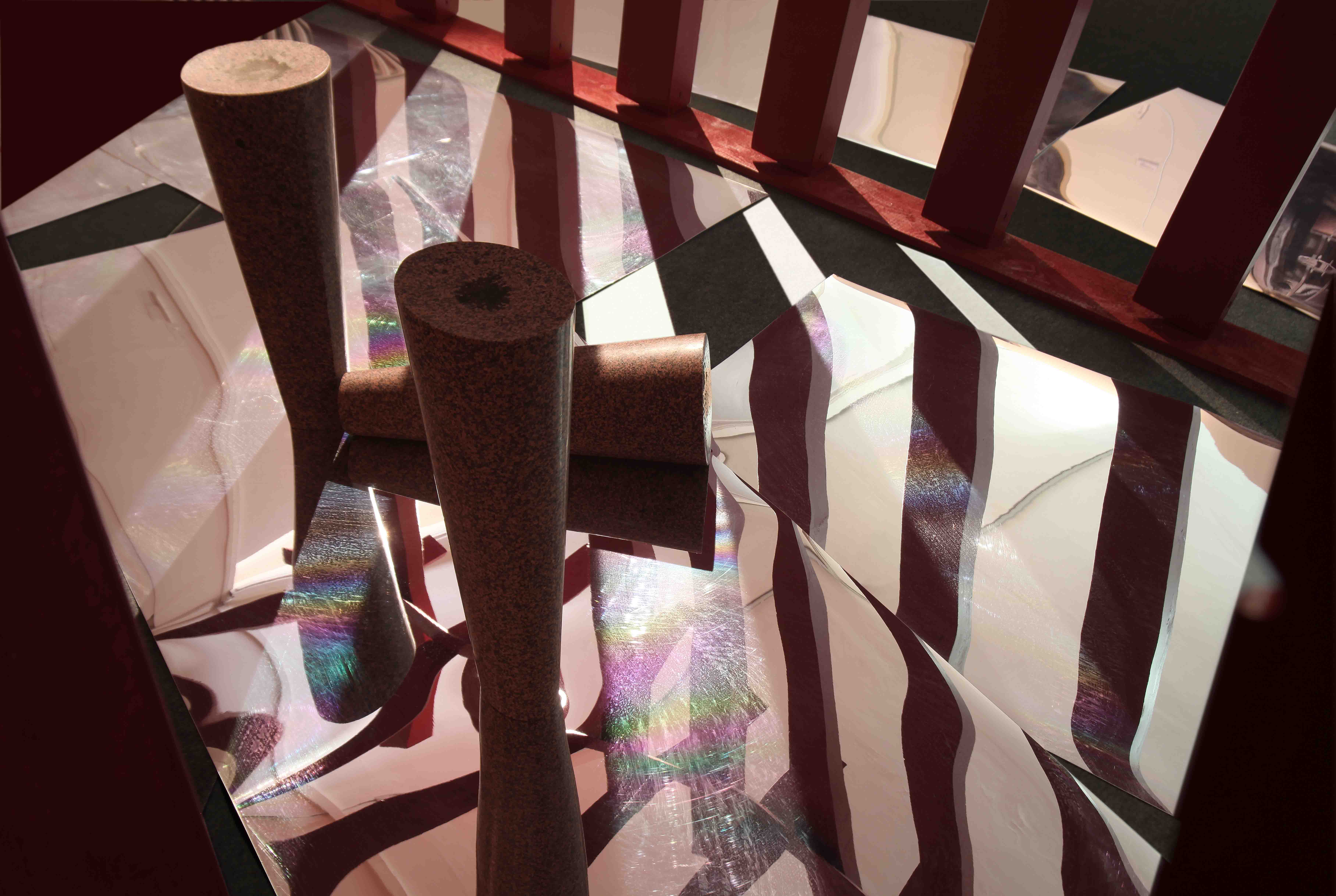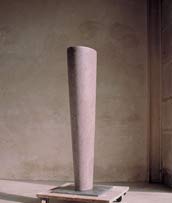Modulare Saeulen und Konstruktive Skulpturen
Modular columns and constructive sculptures
Ich
beschaeftige mich mit modularen Systemen ausgehend von der
Saeule der Unendlichkeit von Constantin Brancusi. Er fand die vertikale
Stapelung eines Moduls, eines „ornamentalen Segmentes”, in den Haeusern
und Torstuetzen seiner Heimat. Durch eine geniale Handlung schuf er die
Saeule der Unendlichkeit: fuer Robert Morris die erste minimalistische
Grossskulptur des 20. Jahrhunderts. Meine gusseiserne Arbeit „Saeule”
(1990-93) ist ein „Dialog” mit Brancusis Werk, wenn auch aus
angemessener Distanz zu dieser. Das bei Brancusi beschriebene Volumen
ist hier ein von Kreissegmenten gebildeter Raum, der in frontaler Sicht
die Umrisse des Moduls von Brancusi hat.
Als
komprimiertes Lineament erscheint die Saeule in ihrem Ambiente; durch
das sich bewegende Licht entsteht im Inneren und auf der gesamten Hoehe
der Saeule, eine andauernde, sich in alle Richtungen entfaltende
Bewegung, die die Symmetrie der Skulptur „dekonstruiert”.
I
work with modular systems which are somehow related to Constantin
Brancusi’s “Endless Column”. He discovered the vertical stapling of a
module, of an ornamental element found in the porches and the portals
of the houses of his native place. By the stroke of a genius, he
created “The Endless Column”. For the American sculptor Robert Morris,
it is the first monumental minimalist sculpture of the 20th century. My
“Untitled Column” (1990-93) is a “dialogue” with Brancusi’s work which
takes place at an appropriate distance. In my column, the volume of the
module created by Brancusi becomes an empty space, determined by four
arches.
The column rises
like a compressed lineament in its environment; due to the permanent
changes in the direction of the natural light, there is a continuous
movement all over the column, so that the symmetry of the sculpture is
“deconstructed”.
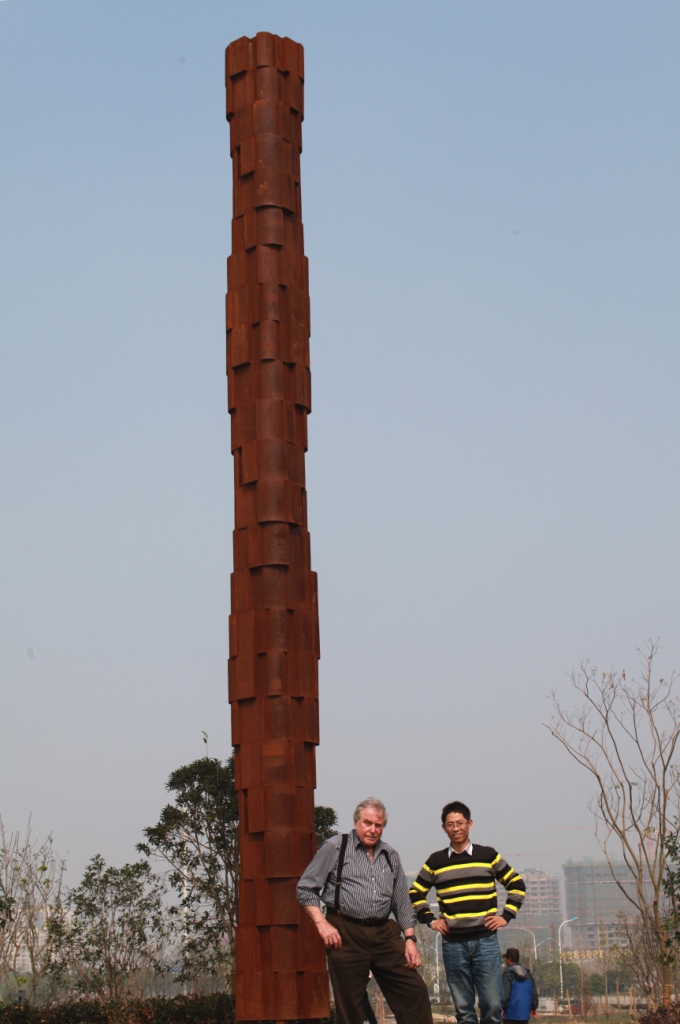
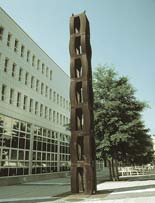
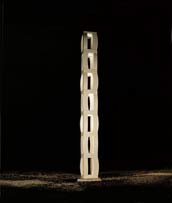
Modulare
Saeule, Sammlung Pforzheim Landratsamt, 1990-92, Gusseisen,
rechtes Bild, die Saeule aus Gips und Styropor, 845 x 120 x
120 cm
Modular column, collection of the County
Council, 1990-92, cast iron, the image on the right, the column made
out of plaster and styropor, 845 x 120 x 120 cm
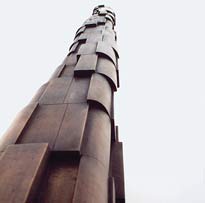 |
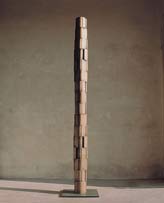 | 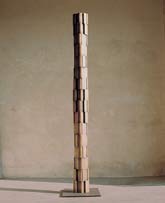 |
Modulare
Saeule, 1998-99, Bronze, 280
x 25 x 22 cm
Modular columns, 1998-99, bronze, 280
x 25 x 22 cm
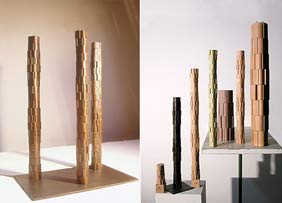
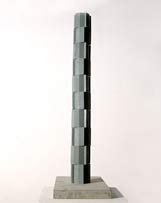
Modulare
Saeulen, 2000-2002, Bronze, Holz, Kunststoff, Hoehe max. 60 cm
Modular columns, 2000-2002, bronze, wood, polyurethan, height
max. 60 cm
Studie
fuer Italienische Saeule, Kunststoff, 120 x 10 x 10 cm
Study
for the „Italian Column”, polyurethane, 120 x 10 x 10 cm
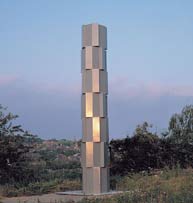
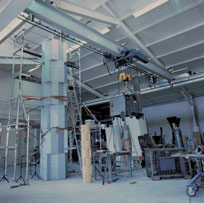
Italienische
Saeule, 1981-82, Stahl, 680 x 120 x 120 cm
„Italian
Column“, 1981-82, steel, 680 x 120 x 120 cm. Collection City of Wurmberg
Montage
der italienischen Saeule in meinem Atelier, 1982
Assembling
the „Italian Column” in my studio, 1982
Zu „Italienische Saeule”
Die „Italienische Saeule“ von Peter Jacobi wurde nach einem
kunsthistorischen Motiv aus Venedig entwickelt und steht in der
Tradition der minimalistischen Grossskulptur, wie sie zum ersten Mal
von Constantin Brancusi mit der „Endlosen Saeule“ geschaffen wurde. Die
Hoehe der Saeule ergibt sich dadurch, dass in der Vertikalen sieben
Module aus Stahlblech uebereinander montiert werden. Die Module
suggerieren eine in alle Richtungen sich entfaltende Bewegung, da die
ausstrahlenden und absorbierenden Oberflaechen der Saeule durch die
Veraenderung des Sonnenlichts und durch die Veraenderung des
Betrachterstandpunktes immer in „neuem Licht” erscheinen. Unberuehrt
von den bildhauerischen Problemen der Statik und der Ponderation
entfaltet die Saeule so eine Art Schwerelosigkeit im freien Raum, der
sie umgibt und der an ihr ermessen werden kann. Die freistehende, nicht
in Architektur eingebundene Saeule ist seit alters her ein Symbol der
Verbindung von Himmel und Erde, ein Mittel, auf das menschliche Streben
hinzuweisen. Die klassische Vollkommenheit, das innere und aeussere
Gleichgewicht vereinigen innere Spannung und Verdichtung des Raumes.
Durch ihr Aufbrechen in den Raum wird die Saeule bei Jacobi zu einem
eindrucksvollen Zeichen der Hoffnung.
Werner Marx
Mannheim
On
“The Italian Column”
Peter
Jacobi uses a motif from Venetian architecture to configurate his
“Italian Column”. The column belongs to the tradition of monumental
minimalist sculpture, as established by Constantin Brancusi with his
“Endless Column”. The modules suggest a movement that expands in all
directions, as the surfaces seem to reflect or absorb the light, the
viewer changes his position and the rays their course, so the column
always appears in a “new light”. Free from the sculptural challenges of
statics and weight, the column acquires a certain weightlessness in the
space that contains it and which is shaped by it. The column that rises
independently from architectural volumes has always been conceived as a
symbol of the link between the terrestrial and the celestial spheres,
it is a way to translate permanent human aspirations. The classical
perfection, the balance established between the interior and the
exterior, unites the inner tension to the compression of space. As it
pierces the space, Jacobi’s column becomes an impressive sign of hope.
Werner Marx
Mannheim
4 parts. 5x120x190 cm, each
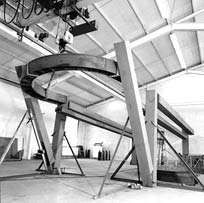
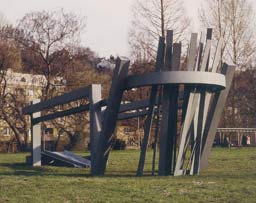
Offene
Konstruktion, 1984, Stahl, 420 x 220 x 1350 cm, beim Aufbau in meinem
Atelier
Open Construction, 1984, steel, 420 x 220
x 1350 cm. while assembling it in my studio
Offene
Konstruktion, 1984, Stahl, 420 x 220 x 1350 cm
Open
construction, 1984, steel, 420 x 220 x 1350 cm. Collectuon
Sculptur Park Beijing
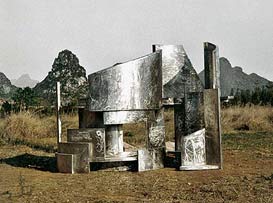
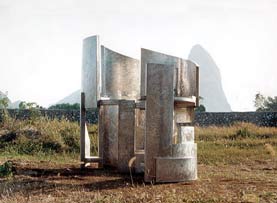
Construct
Deconstruct, 1999, V2 A-Stahl, 310 x 480 x 280 cm, Sammlung, Guilin,
Sued China, Yuzi Paradise Sculpture Parc
Construct
Deconstruct, 1999, stainless -steel, 310 x 480 x 280 cm, Collection
Guilin, South China, Yuzi Paradise Sculpture Parc
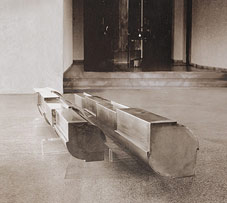
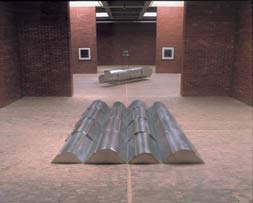
Liegendes
Saeulenpaar, 1993-94, V2A Stahl, Masse einer Saeule 54 x 81 x 420 cm
Couple of columns lying, 1993-94, stainless - steel, size of
one column 54 x 81 x 420 cm
Relief, 1993-94, stainless - steel,27 x 176 x 420 cm, photograph in the Museum of Contemporary Sculpture, Oronsko, Poland
Bei der Skulptur „Saeulenpaar” sind die Module der Saeulen in der Laenge und im Formenaufbau gleich, sie haben jedoch unterschiedliche Breiten und Tiefen. Auch hier „drehen” die Module der Saeulen abwechselnd nach rechts und links.
The sculpture called „Couple of Columns Lying”, has identical modules in terms of length and form, yet they differ as to their width and depth. Here, too, the modules of the column “rotate” in opposite directions.
Das „Boden und Wand Relief” aus Chrom-Nickel-Stahl besteht aus vier konischen Elementen, die buendig aneinander gefuegt sind. Die vier Elemente sind in kontraeren Richtungen gesetzt. Jede der Halbsaeulen setzt sich aus gleichlangen und im Formaufbau identischen Modulen zusammen, die in der Hoehe und Breite unterschiedlich dimensioniert sind. Die vier Module „drehen” abwechselnd nach rechts und links.
This relief made of stainless steel can be placed either horizontally or vertically. It consists of four cone-shaped elements that are tightly attached to one another. The four elements are placed in opposite directions. Each half of a column derives from modules identical in terms of length and shape, yet different in terms of height and width. The four modules “rotate” alternatively to the right and to the left.
Variante 3 einer Wandgestaltung
Designe 3 for a wall
Variante
4 einer Wandgestaltung
Designe 4 for a wall
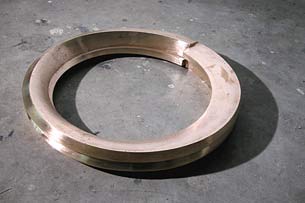
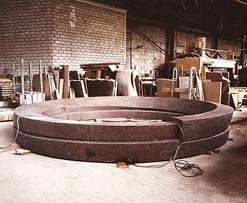
Zwei
uebereinander liegende Ringe mit ungleichen Enden, am oberen Ring dreht
ein Ende um 90 Grad. Bronze. 1987. 57 x 56 x 12 cm
Two
rings with unequal ends, sitting one in top of the other, one end turns
with 90°. Bronze. 1987. 57 x 56 x 12 cm. In this
sculpture, 8 lines forming the contour of the two circular shapes are
moving in space, in a subtle complex formation.
Zwei
uebereinander liegende Ringe mit ungleichen Enden, am oberen Ring dreht
ein Ende um 90 Grad, Wurmberg, 1988, Granit Ballmoral, 60 x 450 x 455 cm
Two rings with unequal ends, sitting one in top of the other,
one end turns with 90°. Collection town of Wurmberg, 1988, granite
Ballmoral, 60 x 450 x 455 cm. In this sculpture, 8 lines
forming the contour of the two circular shapes are moving in space, in
a subtle complex formation.
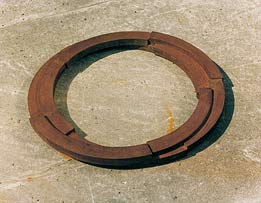
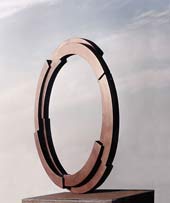
Zwei
unterbrochene und verhakte Ringe, 1990, 8 x 85 x 86 cm
Two
interrupted rings, interacting, 1990, 8 x 85 x 86 cm. Placed in a
horizontal or vertical position.
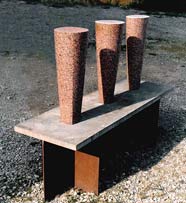
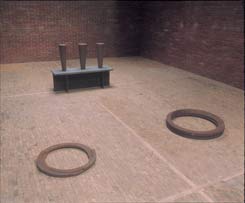
Von
rund zu rund, von rund zu quadratisch, von oval zu oval, 1979/80,
Granit, Kalkstein, Stahl, 126 x 50 x 180 cm
From
round to round, from round to square, from oval to oval, 1979/80,
granite, limestone, steel, 126 x 50 x 180 cm
Retrospektive
Ausstellung, “Peter Jacobi, Columns Memorials”, im The Museum of
Contemporary Sculpture, Oronsko, Poland, 1999
Retrospective
exhibition “Peter Jacobi, Columns Memorials”, in The Museum of
Contemporary Sculpture, Oronsko, Poland, 1999
Column, 1999, granite Balmoral, 176 x 40 x 26 cm
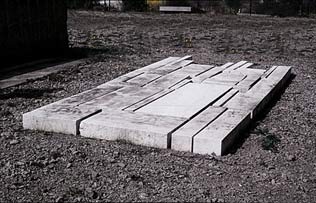
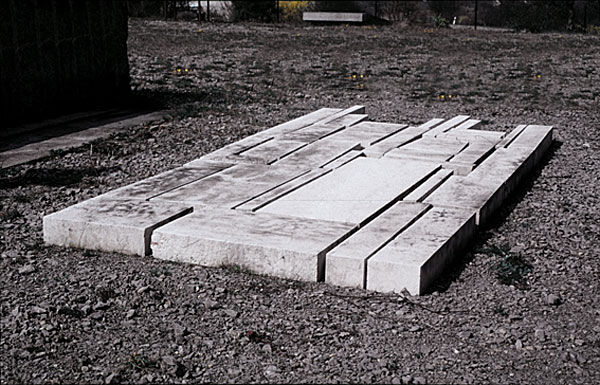
Ohne
Titel, 1980-81, Kalkstein Botticino Classico, 12 x 200 x 450 cm
Untitled, 1980-81, limestone Botticino Classico, 12 x 200 x
450 cm
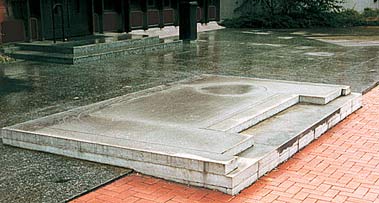
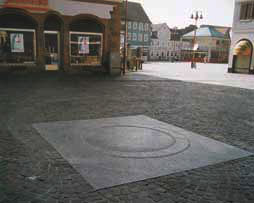
Inliegend,
1982, Kalkstein, 12 x 200 x 450 cm, Radolfzell
Inlying,
1982, limestone, 12 x 200 x 450 cm, Radolfzell
Ohne
titel, 1980, Granit, 250 x 250 cm (Detail)
Untitled,
1980, granite, 250 x 250 cm (detail)
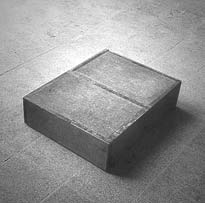
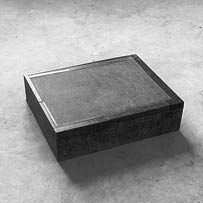
Inliegend,
1976-77, Diabasz Stein, 18 x 40 x 50 cm
Inlying,
1976-77, Diabasz stone, 18 x 40 x 50 cm
Inlying, 1976-77, Diabasz stone, 16 x 40 x 55 cm
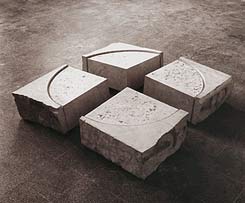
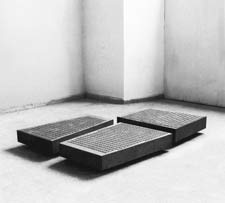
Inliegender
Ring, 1980, Kalkstein 25 x 120 x 120 cm, Sammlung
Skulpturenmuseum Marl
Inlying / Inserted Ring,
1980, limestone, 25 x 120 x 120 cm, Collection
Skulpturenmuseum Marl
1500
Nord-Sued, 800 Ost-West, 1982, Granit, 18 x 140 x 120 cm
1500
North-South, 800 East-West, 1982, granit, 18 x 140 x 120 cm
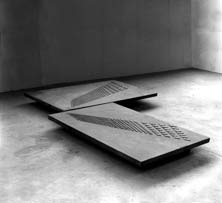
Im
Fallen gesehen, Vue en tombant, 1982, Schiefer, je 5 x 120 x
190 cm
Vue en tombant, 1982, slate, each 5 x 120 x
190 cm
Vue en tombant, 1982, slate, 5 x 100 x 190 cm
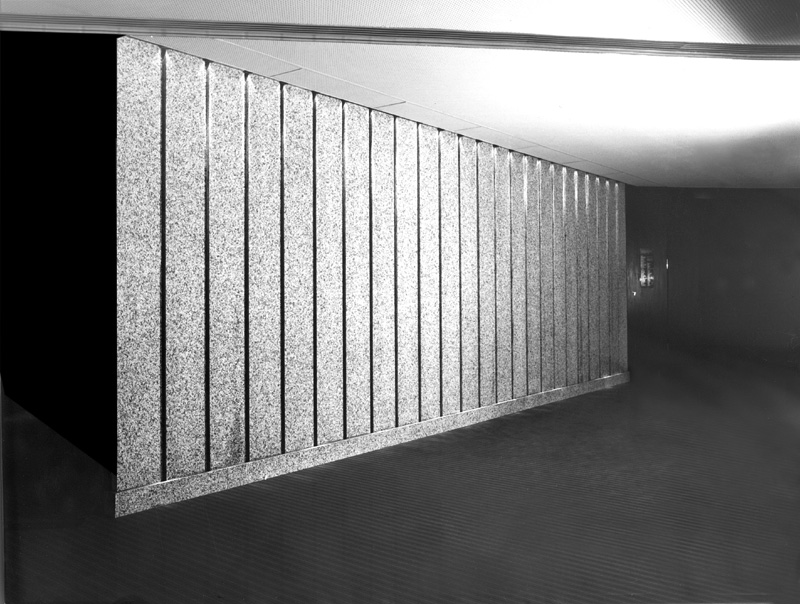
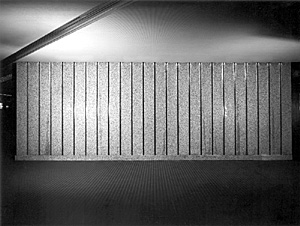
Wall Fountain 1975 granite 300 x 10 x 9000 cm
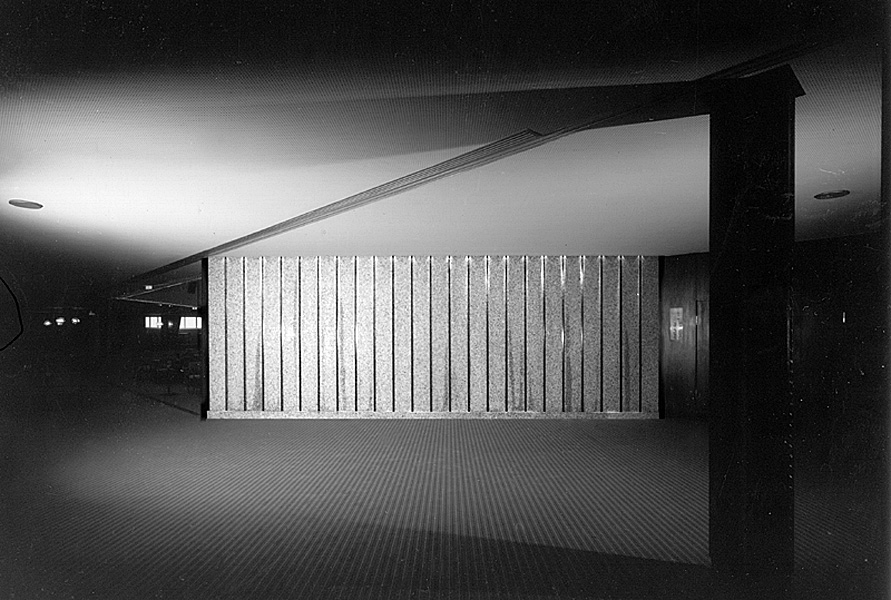
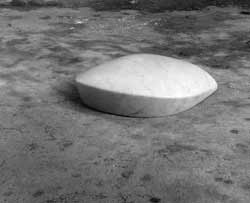
Wall Fountain 1975 granite 300 x 10 x 9000 cm
Cuppola, marble, 1977, Collection as above
Pforzheim Galerie Dez. 2010- Feb 2012. Corator . Isabel Greschat
